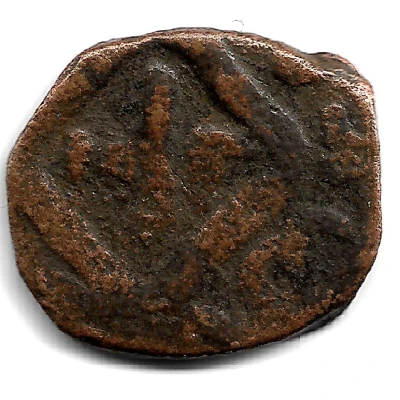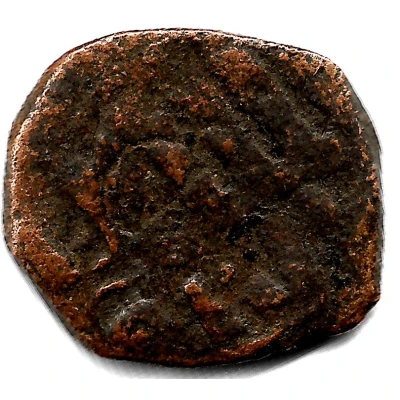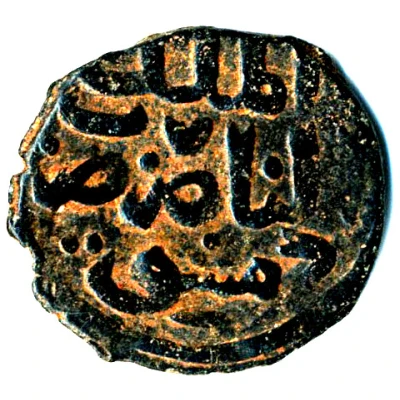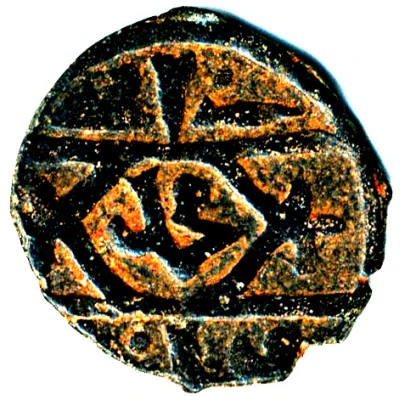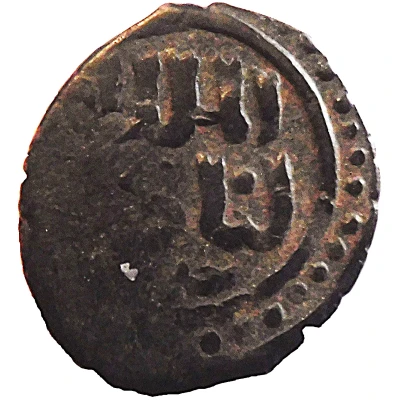
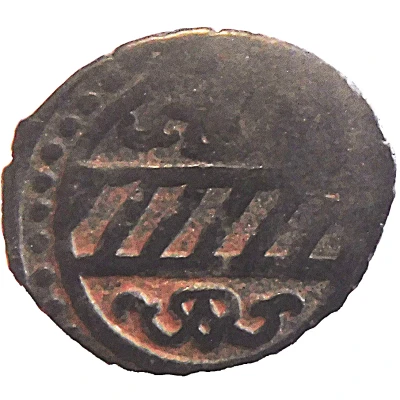

© Cycnos (CC BY-NC)
Fals - al-Nāṣir Muhammad I ND
| Copper | 3.22 g | 20 mm |
| Issuer | Mamluk Sultanate |
|---|---|
| Sultan | Muhammad I (1293-1294, 1299-1309, 1310-1341) |
| Type | Standard circulation coin |
| Years | 1310-1341 |
| Value | 1 Fals (1⁄60) |
| Currency | Dinar (1250-1517) |
| Composition | Copper |
| Weight | 3.22 g |
| Diameter | 20 mm |
| Thickness | 1.0 mm |
| Shape | Round (irregular) |
| Technique | Hammered |
| Demonetized | Yes |
| Updated | 2024-10-05 |
| Numista | N#151362 |
|---|---|
| Rarity index | 86% |
Reverse
A circle separated horizontally by two lines inside which are represented eleven bands; ornaments in the lower and upper fields.
Outside, a beaded circle followed by a continuous circle.
Script: Arabic
Edge
Plain, irregular
Comment
First reign (1293-1294)Second reign (1299-1309)
Third reign (1310-1341)
According to Paul Balog, this type corresponds to the third reign.
Two variants are found, where the 11 bands in between the lines on the reverse are in opposite directions, naming Variant 245a to \\\\\\\\\ oriented bands (as in picture below) and 245b to ////////// oriented bands, as the picture on the top of the page.
©igorstelli
Coins without mint or date.
An interesting note that deserves further research is in BMC Or Vol 9 Catalogue of Oriental Coins in the British Museum - Volume 9. Additions to the Oriental Collection 1876-1888, Part I: Additions to Volumes I-IV by Stanley Poole, stating that these coins might have been struck by another al-Nāṣir, such as Sultan al-Nāṣir Hasan (1334-1361).
Weights range from 2,50 to 3,80 grams, and diameters from 17 to 20 mm.
Interesting fact
One interesting fact about this coin is that it was issued during the reign of al-Nāṣir Muhammad I, who was the seventh Sultan of the Mamluk Sultanate, and was known for his military campaigns and administrative reforms. The coin's design and inscriptions reflect the Islamic culture and religion of the time, with the obverse featuring the phrase "There is no god but Allah" in Arabic, and the reverse featuring the name and title of the Sultan in Arabic. The use of copper as the material for the coin was also a common practice during this period, as it was a readily available and affordable metal.
